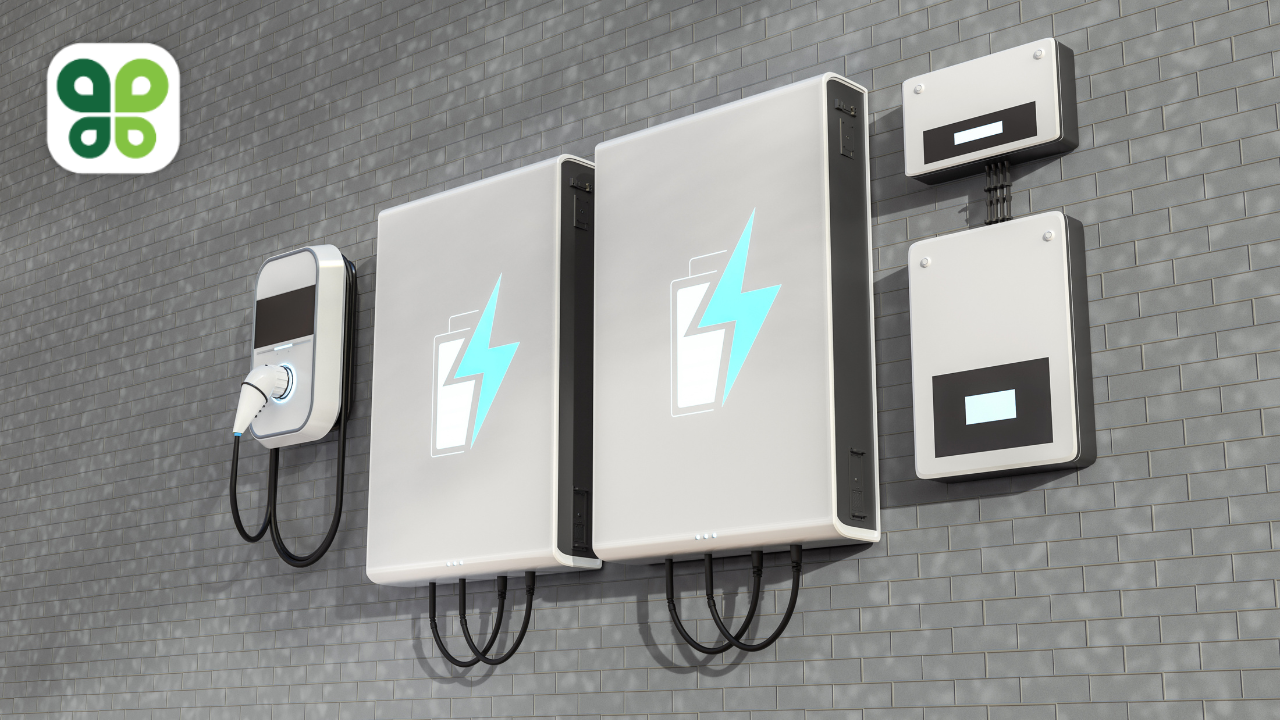
Why Battery Storage Is Key for a Green Future
When you envision the transition to clean energy and achieving Net Zero, you likely picture solar panels, large wind farms, and electric vehicles. But the unsung hero of our mission to reduce global carbon emissions is battery storage. Batteries play a key part in the renewable energy revolution, and they enable higher levels of resilience, flexibility, and control over our new energy sources.
What exactly is battery storage? Imagine a battery pack for your phone, the kind you can plug into an electrical socket to charge and store energy that you can later use when you don’t have access to an outlet. A similar type of battery storage unit can be hooked up to renewable energy sources, storing any excess energy generated by, for example, a solar panel for use at a later time. This technology has become crucial in clean energy adoption, and it comes with a lot of benefits. Here’s what you need to know about battery storage technology and why it’s essential for a green future.
There are many use cases, from EV charging to powering homes and businesses.
Battery storage packs are an increasingly common companion to solar panels installed at business facilities or homes. That means if you have solar panels on your roof, you can maximize the energy (and the utility cost savings) you get by storing additional energy for your facility to use at a later time when the sun isn’t shining on your panels. Excess solar energy can be used to charge electric vehicles, too.
They are becoming more affordable, sophisticated, and accessible.
Battery storage for the energy sector was the fastest growing commercially available energy technology in 2023, with deployment more than doubling year-on-year. This includes at-home solar systems, electric vehicle (EV) charging stations, behind-the-meter batteries, and more. This increasing adoption is largely thanks to extreme cuts in the cost of battery technology. The cost of these lithium-ion batteries has been reduced by 90% since 2010. The battery technology itself has also improved greatly in recent years, with higher energy densities and longer lifetimes.
Batteries solve one big issue with renewables.
Solar and wind can generate a lot of energy. The main issue on that front is that their output does not come at a steady stream, and their peak generation times do not always align with peak energy demand from consumers. Batteries bridge the gap by storing the excess energy created during times of high energy output for use at times when demand is higher.
Plus, when paired with storage, solar panels can continue to generate power even during a grid outage. Without a battery, solar panels would not produce power in that case. This becomes very important especially when there are extended, multi-day outages since solar power would then both support the loads and re-charge the battery.
They are an essential part of Virtual Power Plants.
A virtual power plant (VPP) is a system of renewable energy sources (such as solar panels and battery storage) which can be bundled with each other and other energy saving devices to control usage and demand levels across many locations. These systems can protect the infrastructure of the energy grid by reducing energy consumed during peak demand hours. Plus, they can reduce the price of energy for everyone by providing essential savings with additional energy reduction when prices are high. Batteries play a vital role in these innovative energy systems.
Reliability when demand is too high or there is a blackout.
Across the globe, energy usage is growing incredibly fast and existing energy infrastructure often fails to meet demand. As a result, disastrous energy events are becoming increasingly common. For example, during a heat wave, as millions of people turn on their air conditioners simultaneously, the grid can become so overwhelmed that it results in a blackout. Battery storage systems can help avert these disasters when functioning as part of a VPP, by sensing when demand is high and using battery-stored energy instead of energy from the grid to ease the strain. Batteries can also help in the event of a blackout by acting as a backup energy source.
Storing green energy in batteries is helping scale clean energy adoption at every level, from home and business owners to utility companies. If you have a solar system installed at your facility, or are considering a solar installation, batteries can help you maximize the emissions reductions and cost savings of renewable energy.
Budderfly is incorporating battery storage, behind-the-meter solar generation, EV charging infrastructure and more to create a new first-of-its-kind VPP. To learn more about our VPP plans—or how you can lower your business’s energy bills and carbon footprint with groundbreaking technologies--contact one of Budderfly’s experts today.

